The 50 Best Horror Novels of All Time
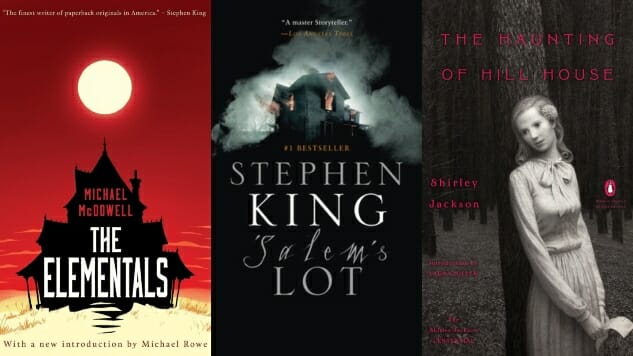
Horror is a peculiar genre. If it’s meant purely to scare, then some of the heftier books on this list would have wracked up a body count, terrifying readers to death over 700 pages or more. And what is scary? What might shock one reader is laughable to another. Ghosts, serial killers, great heaving monsters, the loss of self-control, plagues, impossible physics and a creepy clown all figure into our countdown, with entries spanning from the 1800s to the last few years. One (obvious) author makes five(!) appearances, and easily could have qualified for a few more; another has written just one novel during his decades-long career. We narrowed our focus to prose novels, so please don’t ask after The Books of Blood or Uzumaki. And while we kept an eye on the diversity of our featured authors, the inclusion of women, authors of color and queer creators came naturally as we gathered the best of the best. We’re prepared for you to question our choices, we ask only that you leave the chainsaw at home before doing so. Without further ado, we present our choices for the best horror novels of all time.

 50. The Summer Is Ended and We Are Not Yet Saved by Joey Comeau (2014)
50. The Summer Is Ended and We Are Not Yet Saved by Joey Comeau (2014)
Joey Comeau’s first horror outing, One Bloody Thing After Another, is perhaps creepier and more unsettling than this summer-camp slasher. But The Summer Is Ended and We Are Not Yet Saved gets the nod for importing the genre from film into prose while layering in subtle, smart commentary on our thirst for teen blood. Eleven-year-old Martin is used to entrails—his mother does special-effect makeup for horror movies—but would like to keep his inside of his body. A maniac employed at his bible camp has other intentions. The title of Comeau’s previous novel would have worked here just as well: the gory killings are one bloody thing after the other, stacking up as a reminder that we’ve created a prolific genre around watching kids get murdered in inventive ways.
—Steve Foxe

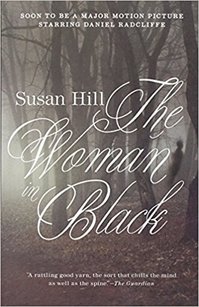 49. The Woman in Black by Susan Hill (1983)
49. The Woman in Black by Susan Hill (1983)
One of the biggest tonal outliers on this list, Susan Hill’s The Woman in Black is crafted like a traditional gothic novel, and could likely fool readers into thinking that Hill is a few hundred years older than she truly is. Published in 1983, The Woman in Black is best known today for inspiring one of the longest-running plays in London’s West End (and a Daniel Radcliffe movie). Structured in the classic British form of a story told around a fireplace, Hill’s short ‘80s anachronism chills thanks to its ominous titular figure, who stalks a house on the foggy moors and foretells the death of children. The Woman in Black may not feel like a quintessentially ‘80s horror novel, but it’s an excellent reminder that, even at the peak of its copycat boom period, the genre refused to be pigeonholed.
—Steve Foxe

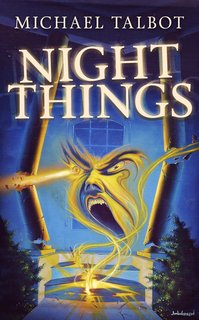 48. Night Things by Michael Talbot (1988)
48. Night Things by Michael Talbot (1988)
Like Michael McDowell, who can be found higher up this list, Michael Talbot was an openly gay horror author who passed away at an early age and whose most popular works fell out of print during the ‘90s. Talbot’s publishing legacy shifted in the last decade of his life to metaphysical nonfiction, but his early horror efforts, including vampire touchstone A Delicate Dependency and haunted-house chiller Night Things, have thankfully come back into accessibility in recent years. Night Things isn’t merely about a ghost haunting the halls of an old mansion, though—the lake house at the center of the novel is a labyrinthine creation taunting protagonist Lauren Montgomery’s family with hidden rooms, doors that open to nowhere and a macabre secret hidden at its center. Fans of Mark Z. Danielewski’s House of Leaves and fellow ‘80s scribe Jack Cady’s The Well should appreciate navigating this maze.
—Steve Foxe

 47. My Best Friend’s Exorcism by Grady Hendrix (2016)
47. My Best Friend’s Exorcism by Grady Hendrix (2016)
Grady Hendrix is building a brand: gimmicky on the outside, surprisingly scary on the inside. Horrorstör, his 2014 horror breakthrough, plopped readers into a haunted faux-IKEA full of torture instruments—beyond what the real-life stores already stock. His follow-up, My Best Friend’s Exorcism, dials back the meta-factor; aside from the yearbook-style packaging, this tale of ’80s gal pals dealing with a demonic intrusion could easily a have been a paperback original during horror’s boom period—and that’s a compliment. Abby and Gretchen are best friends for life on the eve of the first Bush presidency…until Gretchen gets lost in the woods and comes back different. Abby, already an outcast in her swank private school, faces as much peer pressure as she does pea soup in her quest to cleanse her best friend’s soul.
—Steve Foxe

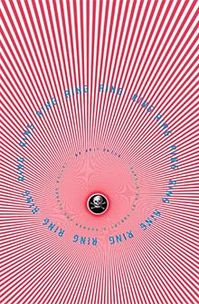 46. Ring by Koji Suzuki (1991)
46. Ring by Koji Suzuki (1991)
Gore Verbinki’s 2002 American adaptation of Koji Suzuki’s 1991 novel Ring utterly reshaped American horror cinema, ushering in a wave of J-horror imports, remakes and knockoffs and helping make the image of a ghostly Japanese woman with slick black hair ubiquitous the world over. While the broad strokes are the same, Verbinksi’s take (and director Hiroshi Takahashi’s Japanese adaptation before it) leans more supernatural than Suzuki’s. In the original novel and its sequels, the cursed videotape and Sadako’s well evolve into something of a medical thriller, as psychic powers and the smallpox virus intertwine. Readers expecting the nonstop scares of creepy abstract video imagery may feel let down, but Suzuki’s novel is a fascinating milestone in Japanese horror fiction.
—Steve Foxe

 45. A Head Full of Ghosts by Paul Tremblay (2015)
45. A Head Full of Ghosts by Paul Tremblay (2015)
In this Bram Stoker Award-winning tale, author Paul Tremblay (whose follow-up, Disappearance at Devil’s Rock, is absolutely chilling if a bit baffling at the very end) manages to both examine the possession subgenre and break new ground with its tired tropes. Fourteen-year-old Marjorie Barrett starts displaying signs of schizophrenia, or maybe it’s just teenage rebellion…or maybe it’s something more. Before long, Marjorie’s out-of-work father agrees to let a reality-TV crew film an attempt to exorcise his daughter’s demons. Cutting between the events of the show and an interview with Marjorie’s younger sister, filmed 15 years after the show’s conclusion, Tremblay walks a razor-thin edge between confirming and denying which forces are actually at play within Marjorie’s head, keeping readers guessing well after the final page is turned.
—Steve Foxe

 44. The Damnation Game by Clive Barker (1985)
44. The Damnation Game by Clive Barker (1985)
The Damnation Game proved that Books of Blood wunderkind Clive Barker could sustain his brand of fear beyond the duration of a short story. Barker’s most compelling skill—the ability to blend lust and revulsion, desire and disgust—is on full display. In this depraved galleria of a novel, with graphic depictions of incest and cannibalism, an in-over-his-head bodyguard attempts to interfere a Faustian pact to save the relatively innocent daughter of a wealthy degenerate. After the first few years of his career, Barker more often delved into dark fantasy than straight-up horror. The Damnation Game, published between Barker’s debut short story collection and the fatefully successful novella The Hellbound Heart (which you may know by its film adaptation, Hellraiser), is still the purest long-form expression of the man’s penchant for plunging the darkest corners of the human imagination.
—Steve Foxe

 43. Audition by Ryu Murakami (1997)
43. Audition by Ryu Murakami (1997)
Ryu Murakami’s Audition is outshined in popularity by Takeshi Miike’s film adaptation of the same name, and a case could be made that Miike’s version is the superior telling of the story. There’s something unforgettable about Murakami’s original prose though; blunt to the point of over-explanation, Murakami lays bare the psychology behind the plot, and forces the reader to confront his or her own role in the voyeurism of violence and manipulation. There’s also an intimacy present in the novel that the movie keeps at arm’s length, to the point that you genuinely worry for widower Aoyama during the infamously shocking climax. Piercing and In the Miso Soup are similarly disturbing tales from this master of Japanese thrillers.
—Steve Foxe

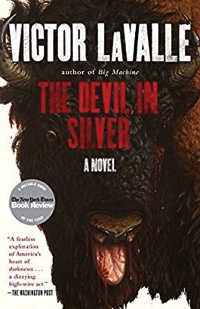 42. The Devil in Silver by Victor LaValle (2012)
42. The Devil in Silver by Victor LaValle (2012)
Victor LaValle cites Shirley Jackson as an influence, and that lineage is easy to identify in this literary piece that’s as much about institutional failings as it is about the bison-headed devil wandering the halls of a mental institution. Pepper, the novel’s protagonist, can’t quite recall the crime he (supposedly) committed, but he knows he was only supposed to be held in New Hyde Hospital for a few days at most. LaValle wrings dread out of Pepper and his fellow inmates’ helplessness, sticking to Jackson’s level of unease instead of attempting all-out terror. By the end, the reality of the titular devil is almost ancillary to the horror that’s been revealed.
—Steve Foxe

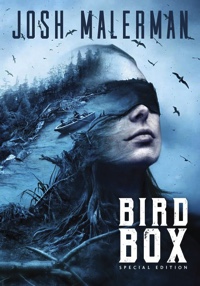 41. Bird Box by Josh Malerman (2015)
41. Bird Box by Josh Malerman (2015)
With your eyes closed and your imagination unfettered, you can envision creatures whose monstrosity knows no bounds. Detroit-based author Josh Malerman manifests an apocalypse of the obscured in Bird Box, in which undiscovered entities start appearing around the world and just one glance of their grotesquery drives people to suicide. In the book’s unforgettable introduction, our protagonist travels down a river with black fabric knotted around her eyes, shepherding two similarly blinded four-year-olds, rowing their way to an uncertain sanctuary while any sound they hear could very well be one of these monsters sloshing ever closer to the bow of the boat.
—Jeff Milo

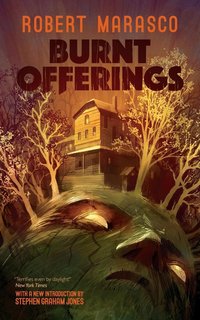 40. Burnt Offerings by Robert Marasco (1973)
40. Burnt Offerings by Robert Marasco (1973)
Stephen King’s ‘70s and ‘80s classics are still so widely celebrated today that it’s easy to forget just how many genre standouts disappeared when the horror shelves waned in popularity in the early ‘90s. Robert Marasco’s Burnt Offerings is one such casualty of our short-term memory, and even its 1976 film version (starring Karen Black and Bette Davis!) is largely unknown to modern fans. The Rolfe family rent a vacation home at the far end of Long Island to get away from their Queens apartment for the summer months. The only unusual stipulation about the home is that the property owners’ elderly mother is to stay in the house’s top floor, confined to her apartment, and fed three times daily. If that’s setting off any warning bells for you, congratulations: you’re smarter than the Rolfe family. As with King’s The Shining, which followed in 1977, Burnt Offerings turns a sprawling home into an oppressive, malevolent force to be reckoned with.
—Steve Foxe

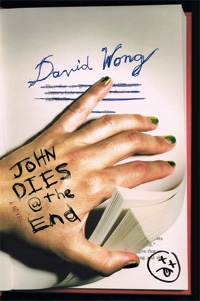 39. John Dies at the End by David Wong (2007)
39. John Dies at the End by David Wong (2007)
A rollercoaster of weird, sprung from a hallucinogenic (and possibly demonic) drug known as soy sauce and written in bracing, punchy style shooting swift sentences, often sliced to seven words or less, and stung with spicy diction detailing psychedelic imagery and delivered with sustained breathlessness. Something of a punk-rock-ified, video-game-esque tear and tumble into the Weird Tales tradition, Wong (a.k.a. humorist Jason Pargin, of Cracked.com), charismatically clusters together a hip and highly evocative narrative of monstrosities, with plenty of barbs any 17-year-old could snigger at… Think of it as the horror-heavier cousin to Ready Player One.
—Jeff Milo

 38. Savaging the Dark by Christopher Conlon (2014)
38. Savaging the Dark by Christopher Conlon (2014)
Christopher Conlon’s all-too-possible Savaging the Dark shares a premise with Alissa Nutting’s controversial Tampa, but the differences in execution are what makes this novel truly horrific and Nutting’s more of a pitch-black comedy. Conlon’s narrator, Mona Straw, slowly unravels while carrying out an affair…with her 11-year-old student. Whereas Tampa introduced an admitted predator from the first page, Conlon takes care to build a believable case for how Mona justifies her taboo actions, even as her control of the situation—and her sanity—slip out of her grasp. Of all the novels on this list, Savaging the Dark may be one of the scariest if only because of its plausibility.
—Steve Foxe

 37. Rebecca by Daphne du Maurier (1938)
37. Rebecca by Daphne du Maurier (1938)
Rebecca didn’t coin the term “gaslighting,” but it’s one of literature’s most chilling examples of psychological harassment. A naïve young woman falls for a handsome, older widower, and agrees to become his bride after only a brief courtship. When she arrives at his impressive estate, she finds herself at the mercy of a housekeeper who remains fiercely loyal to the widower’s late wife, and has no hesitance in making that clear to the protagonist—or in undermining the protagonist’s confidence and sense of security however possible. Rebecca has sold somewhere around 3,000,000 copies in its lifetime, and its whiplash third-act twists make it easy to see what attracted Alfred Hitchcock to adapt it into an Academy Award-winning film in 1940.
—Steve Foxe

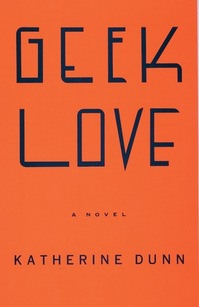 36. Geek Love by Katherine Dunn (1989)
36. Geek Love by Katherine Dunn (1989)
It’s a curious thing to take on the concept of a “freak show” without slipping into ableism and other offensive tropes. Tod Browning’s seminal 1932 film Freaks revealed the ugliness in the traditionally attractive members of its cast, and Katherine Dunn’s Geek Love populates its 360-odd pages with such a wide and eclectic set of characters that of course some are bound to be reprehensible, regardless of stunted limbs or psychic predilections. Told in two time periods, Geek Love follows a family of intentionally bred “freaks”—the family’s progenitors consume various drugs and chemicals to produce different birth defects—as they grapple with telekinetic incest, burgeoning cults and consensual amputation. It sounds like a splatterpunk nightmare, but Dunn’s novel earned its National Book Award finalist nod because of the heart that beats under its freakish exterior.
—Steve Foxe

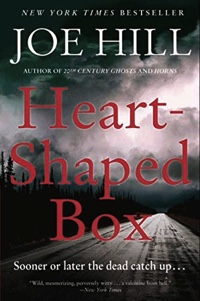 35. Heart-Shaped Box by Joe Hill (2007)
35. Heart-Shaped Box by Joe Hill (2007)
An over-the-hill rock star buys a haunted suit on the Internet. It sounds like the setup to a bad joke, not the plot of one of horror fiction’s most important debut novels of the century, but Joe Hill throttles into his premise and never lets up. While Horns is fast and punchy and NOS4A2 is sprawling and darkly fantastical, Heart-Shaped Box is like a long motorcycle ride straight into despair. Judas Coyne, Hill’s Rob-Halford-meets-Glenn-Danzig protagonist, confronts both a sinister spirit and the intersection of his own myth and humanity, joined by his two loyal hounds and the latest in a string of female groupies named after their states of origin. Eleven years and several major works from Hill later, it’s clear that this chilling debut wasn’t a fluke.
—Steve Foxe

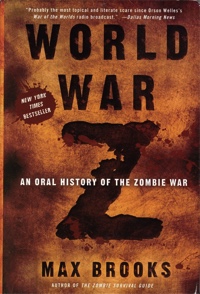 34. World War Z by Max Brooks (2006)
34. World War Z by Max Brooks (2006)
Zombie fiction has never come close to the cultural impact and artistic importance of zombie cinema, until World War Z came along. Nobody had thought to take the idea of a zombie apocalypse and truly dive into the guts of everything else besides the violence, and that’s what makes Max Brooks’ book so incredible. If you’re not aware, it isn’t a true “novel”—rather, it’s presented like a journalistic report in a series of dozens of interviews with people from all over the globe on how they survived the zombie crisis. The audience gets to see exactly how it all went down, and Brooks’ gift is in making it all seem so reasonable, because he considers every possible eventuality. He shows us how the infection could realistically spread around the globe thanks to human trafficking. He shows us how modern militaries could possibly be defeated via poor planning and mass defections. He shows us how society might be after 90 percent of humanity has been killed and an uneasy rebuilding period has begun. Ignore the existence of the horrendous, slap-in-the-face film adaptation with Brad Pitt and simply read the book, because World War Z is easily the best piece of zombie fiction ever written.
—Jim Vorel

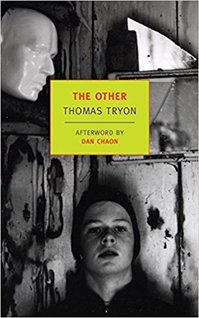 33. The Other by Thomas Tryon (1971)
33. The Other by Thomas Tryon (1971)
In his excellent genre-history-slash-oddity-collection Paperbacks From Hell, novelist Grady Hendrix makes clear that Thomas Tyron’s The Other was a sensation, becoming a near-instant bestseller and helping, alongside The Exorcist and Rosemary’s Baby, to kick off the paperback horror boom period of the ‘70s and ‘80s. The tale of twin 13-year-old boys, one kind and unassuming, one growing increasingly sinister, hit the perfect sweet spot of can’t-look-away homegrown horror to attract mass audiences, just as film The Bad Seed did decades earlier. The Other hasn’t maintained the pop-culture staying power of its most famous contemporaries, but remains a must-read for fans of the genre.
—Steve Foxe

 32. Little Star by John Ajvide Lindqvist (2011)
32. Little Star by John Ajvide Lindqvist (2011)
It’s hard not to feel a bit bad for Swedish author John Ajvide Lindqvist. Despite two stellar film adaptations of his vampire novel Let the Right One In, Stephen King comparisons take up more real estate on his American book covers than does his own name. With shades of Carrie, Little Star does little to dissuade that similarity. Two young girls, one extraordinary and one suffocating under her own feelings of mediocrity, connect online and form a friendship that will have terrible consequences. Lindqvist taps into the modern-day fears that drive adolescent anxiety—less locker room, more Internet comment section—and stretches them out to their most disturbing logical conclusion. Despite a suggestion of the supernatural, it is the violence committed by very ordinary young people that will stick with you long after you’ve finished Little Star.
—Steve Foxe

 31. The Shining Girls by Lauren Beukes (2013)
31. The Shining Girls by Lauren Beukes (2013)
While horror has always flourished on the small-press scene, Lauren Beaukes is helping to forge a continued legacy for the genre at major publishers as well. The Shining Girls is a serial killer novel unlike any other, as Harper Curtis discovers a house in Depression-era Chicago that opens its doors to other times—and comes with a kill list of “shining girls” destined to die at his hand. Kirby is the last name on the list, and the only one who survived Harper’s first murder attempt. As in her exceptional follow-up, Broken Monsters, South African novelist Beukes weaves together a diverse cast of characters and just enough science fiction to complicate her premise without distracting from the horror at hand.
—Steve Foxe

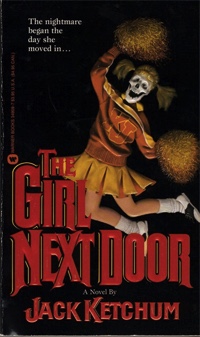 30. Girl Next Door by Jack Ketchum (1989)
30. Girl Next Door by Jack Ketchum (1989)
Ketchum’s twisted tale of under-your-nose terror got some extra attention in 2007, when a limited-run feature film brought the story back into the horror conversation. The novel, which is based on the Indiana murder case of Sylvia Likens, follows single mother, alcoholic and next-door neighbor Ruth, who takes in two nieces after their parents die in a car accident. Ruth’s rapidly deteriorating state creates a hellish environment for the nieces and her own kids alike, and The Girl Next Door will make you think twice, thrice—Hell, probably forever—about handing your kids off to anyone.
—Tyler Kane

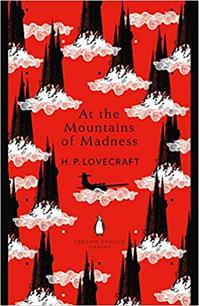 29. At the Mountains of Madness by H.P. Lovecraft (1936)
29. At the Mountains of Madness by H.P. Lovecraft (1936)
H.P. Lovecraft really wasn’t a “novelist,” per se, in the sense that he never wrote a single piece of fiction long enough to be unmistakably “a novel,” but certain stories such as “The Case of Charles Dexter Ward,” “The Shadow Out of Time” and especially novella At the Mountains of Madness are tough to categorize as anything else. Madness in particular has captivated the imaginations of audiences consistently since it was first published in 1936, and its bitterly cold, ice-caked horrors can be felt reverberating through the ages and all the way into modern AMC TV series such as the first season of The Terror. Like all of Lovecraft’s best work, it delivers its eeriness from a slowly revealed reality that our feeble human society is utterly insignificant, only existing by the whim of unimaginable forces that perhaps simply haven’t bothered to notice us just yet. And when those forces wake up to the annoyance of human incursion? Well, when that happens, “madness” might be our species only respite.
—Jim Vorel

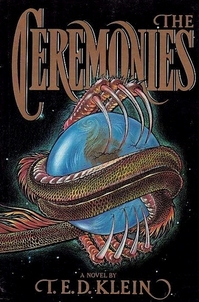 28. The Ceremonies by T.E.D. Klein (1984)
28. The Ceremonies by T.E.D. Klein (1984)
At the beginning of the year, Paste published a list of overlooked ‘80s horror novels. Stephen King sought out the author on Twitter to recommend one more: T.E.D. Klein’s The Ceremonies, which King described as, “the Moby-Dick of ‘80s horror.” Reader: he was not wrong. Klein has published just one novel in his career, but it’s a hefty one, sitting at the intersection of the Arthur Machen and Clarke Ashton Smith’s Weird Fiction tradition and the ‘80s zeitgeist of psychics and impending global annihilation. If you think you’ve read the best the genre has to offer, take King’s advice and track down this criminally forgotten tome.
—Steve Foxe

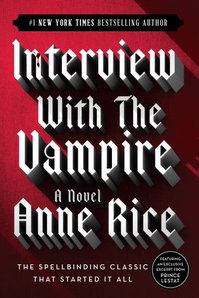 27. Interview With the Vampire by Anne Rice (1976)
27. Interview With the Vampire by Anne Rice (1976)
Amazingly, embarrassingly, we debated whether or not to include Anne Rice’s Interview With the Vampire on this list. Is the novel truly horror, or is it gothic romance? What an absurd delineation! Written in the wake of her young daughter’s death, Rice’s first installment in The Vampire Chronicles is a psychosexual marvel, and a turning point in vampire fiction. Rice’s vampires are tortured souls who’ve lived too long, trapped in bodies that refuse to age. It’s not simply the requirement of blood or the avoidance of sunlight that pains Rice’s immortals, but the accumulated weight of existence, and the limbo of a “life” without change. A direct line can be traced from Interview and its famous film adaptation to the surge in ‘90s goth culture and the romanticizing of vampires up through Twilight—but don’t hold that against Rice. While there’s one more vampire novel higher up our list, Interview is potentially the most important work in the subgenre since Stoker.
—Steve Foxe

 26. A Choir of Ill Children by Tom Piccirilli (2003)
26. A Choir of Ill Children by Tom Piccirilli (2003)
The titular phrase “a choir of ill children” is used four or five times throughout the late Tom Piccirilli’s haunting Southern Gothic, first in reference to the off-kilter musicality of protagonist Thomas’ three brothers (conjoined at the head) speaking in unison. Thomas, the heir of Kingdom Come’s most prosperous family line, enjoys an equal mix of fear and respect in town, from the granny witches in the swamps to the compulsively nude preacher’s son to the sheriff nursing a mighty Napoleon complex. If that sounds comedic, that’s because there is a perverted sense of dark humor punctuating the novel’s scenes of shocking violence and grotesquery. Like the great Michael McDowell and Karen Russell, Piccirilli mines his southern setting for the full range of the region’s complicated, messy magic.
—Steve Foxe
 25. Something Wicked This Way Comes by Ray Bradbury (1962)
25. Something Wicked This Way Comes by Ray Bradbury (1962)
Were this list inclusive of short story collections, Ray Bradbury’s The October Country would be a serious contender for the top spot. Something Wicked This Way Comes doesn’t rank quite as high, but still embodies what makes Bradbury so influential in the world of the dark fantastic. It’s hard to imagine Neil Gaiman or Stephen King having their current careers had Bradbury not paved the way with his deeply human, quietly terrifying brand of horror, and Something Wicked, like so many of King and Gaiman’s best-loved works, also deals in that particular childhood fear of growing older and away from youthful innocence. A traveling carnival brings tempting delights and sinister frights, and readers young and old should find this one to be a timeless autumnal classic.
—Steve Foxe

 24. The Terror by Dan Simmons (2007)
24. The Terror by Dan Simmons (2007)
From Song of Kali and Carrion Comfort to a host of sci-fi classics, Dan Simmons is no stranger to lengthy literary outings. The last decade or so found the author hitting his stride with immersive historical horror fiction, the best of which is the story of the HMS Terror’s failed search for the Northwest Passage. While most of the horrors awaiting the ship’s crew are all-too-real—shrinking rations, scurvy, bitter cold—there’s a looming supernatural presence driving the survivors farther from civilization and any hope of rescue. Don’t wimp out of reading this in favor of the AMC television series—Simmons is a long-time genre master finding new ways to reinvent himself each decade.
—Steve Foxe

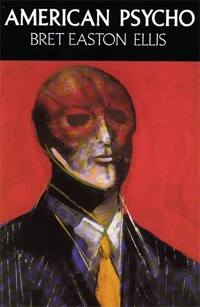 23. American Psycho by Bret Easton Ellis (1991)
23. American Psycho by Bret Easton Ellis (1991)
It’s hard to downplay the horrors that hide inside Bret Easton Ellis’ American Psycho. Ellis received hate mail, death threats and became the subject of immense criticism after serial killer Paul Bernardo was found with a copy of the book. And it’s understandable why the book was a bit, uh, shocking in the ‘90s. Ellis’ twisted satire of upper-class living played out much like Less Than Zero, another tale of hyper-wealthy individuals searching aimlessly for something in a world where everything was handed to them. In Patrick Bateman’s case, a Wall Street yuppie finds murder as his escape. He tortures a homeless man. Breaks a dog’s legs. At one point, he gets his hands on a chainsaw. For some, it may seem like senseless violence for nothing—but the whole tale is a deep delve into Ellis’ own alienation and madness in the late ‘80s. And years later, it’s also a pretty good satire that looks toward the one percent.
—Tyler Kane

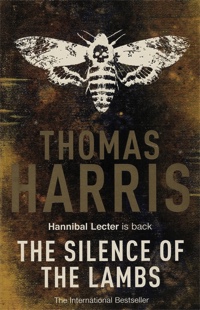 22. The Silence of the Lambs by Thomas Harris (1988)
22. The Silence of the Lambs by Thomas Harris (1988)
It’s a little odd getting around The Silence of the Lambs’ third-person present tense: “Starling looks down the corridor,” etc., but once you get used to it, it’s a device that ends up perfectly suiting the novel. The narrator’s impartial voice floats above the proceedings, never siding with one character or settling exclusively onto their perspective—at times, the third-person narration gives us glimpses into the minds of Clarice Starling, Hannibal Lecter and Buffalo Bill. What the novel also does particularly well is make us probe into the motivations and ambition of Starling, going beyond her desire to simply help people and catch a killer. Opposed at nearly every turn by the institutional roadblocks erected in the path of female FBI trainees, the reader can sense the desperation of Starling and her borderline selfish desire to stand out and prove herself to her entirely male superiors. You can also sense this is part of the reason that Lecter takes an interest in her, finding her ambitions an interesting character trait that he can use to wrap Starling around his finger. This is actually one of the cases where it’s helpful to have seen the film in advance, because you can read Lecter’s dialogue and imagine it being delivered by Sir Anthony Hopkins. That’s a damn good combination to make for a compelling reading experience.
—Jim Vorel

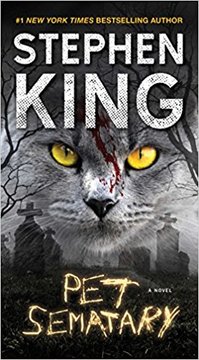 21. Pet Sematary by Stephen King (1983)
21. Pet Sematary by Stephen King (1983)
By the time Pet Sematary was published in 1983, a mythology had grown around it. Rumors among King’s fans suggested that the book was too frightening to publish, the sort of death-saturated manuscript you had to read wearing rubber gloves. There was some truth to this. When a cat belonging to his daughter was killed on the busy truck route in front of his house, King wondered: what would happen if he buried the cat, and three days later it came back, somewhat altered? And what if a child were killed, too, then came back changed (and not for the better)? In the novel, doctor Louis Creed takes a job at the University of Maine Infirmary and moves his wife, daughter and two-year-old son Gage into a house by a busy interstate. The highway soon consumes his daughter’s cat and later his son. But the permanency of death is a hard lesson for a parent to learn, and when Creed interferes with the natural order, fate slams him tenfold with retribution. King once wrote that horror writers are afraid to open the door all the way and show the monster’s face. In Pet Sematary King swings it wide. Beyond? The darkness and the dim shape of Oz, the great and terrible, awaits.
—William Gay

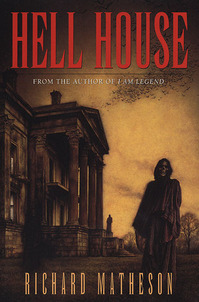 20. Hell House by Richard Matheson (1971)
20. Hell House by Richard Matheson (1971)
Richard Matheson is perhaps better known for an earlier work, the sci-fi/horror I Am Legend, which has been repeatedly butchered on film under various names. Hell House gets the nod on this list because it is a purer distillation of Matheson’s horror approach, and an exemplary use of the haunted house—a theme that occupies at least 10% of this list. The researchers who enter Matheson’s “most haunted house in the world” find themselves subjected not only to supernatural perversions, but to attacks on their own sanity. By the final page, no title short of Hell House will feel appropriate.
—Steve Foxe

 19. The Stand by Stephen King (1978)
19. The Stand by Stephen King (1978)
Stephen King’s magnum opus nearly didn’t make this countdown, fitting, as it does, more neatly into post-apocalyptic fiction or fantasy. At over 800 pages (more, if you’re reading the uncut edition), The Stand includes as much horror as any of King’s other novels, spurred by a viral outbreak that kills off 99.4% of the population. World-ending scenarios were on everyone’s minds in the ‘70s and ‘80s, as global tensions escalated and means of mass destruction proliferated. King isn’t content to simply explore a post-pandemic wasteland, though; The Stand is his most epic standoff between good and evil, the latter concept embodied by Randall Flagg, a recurring antagonist of King’s who becomes essential to the sprawling Dark Tower saga. Knowledge of that series isn’t necessary to undertake The Stand—just a month or so of dedicated reading time, and a hearty resistance to nightmares.
—Steve Foxe

 18. Swan Song by Robert R. McCammon (1987)
18. Swan Song by Robert R. McCammon (1987)
Robert R. McCammon was one of the most successful and prolific horror authors of the ‘80s and early ‘90s, before an editorial dispute prompted him to take a decade-long hiatus from writing. Swan Song, which tied with Stephen King’s Misery for a Bram Stoker Award for best novel, is a 960-page magnum opus of apocalyptic fiction that feels a bit too familiar in 2018. As the novel opens, various countries have already obliterated themselves in nuclear fire, and the United States and Russia are locked in a tensely escalating standoff. Once the bombs begin to fall, McCammon follows several motley bands of survivors, including “Swan,” a young girl who may have restorative powers necessary for mankind to emerge from the nuclear winter. Although not as widely read as King’s The Stand, Swan Song is one of the finest examples of apocalyptic fiction (even if it hits too close to home today).
—Steve Foxe

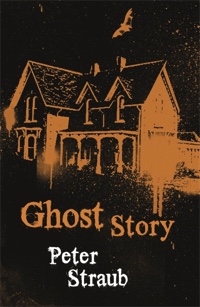 17. Ghost Story by Peter Straub (1979)
17. Ghost Story by Peter Straub (1979)
Stephen King declared Ghost Story the finest in its genre in 1981 with the non-fiction horror critique, Danse Macabre, which, as we’ve established, is high praise indeed. Peter Straub’s best-known piece isn’t as simple as its title lets on. Sure, we’ve all heard ghost stories, but this multi-layered story of paranormal revenge, told from the point of view of four aging men who kill time by trading ghost tales, under-promises and over-delivers. Though it took years for Straub to arrive at supernatural tales, Ghost Story will be remembered as his first critical success—not to mention his most beloved work.
—Tyler Kane

 16. Coraline by Neil Gaiman (2002)
16. Coraline by Neil Gaiman (2002)
In an episode of Louie, the now-disgraced comedian declines carrying his daughter’s heavy backpack, explaining, “I would never take your burden. Struggling is how you get stronger.” Neil Gaiman was probably thinking similar things when he wrote Coraline, an insidious middle-grade masterpiece with the power to unsettle any generation. The titular Coraline, a plucky youth bored of her hyper-domestic parents, assumes the modern incarnation of Alice, crossing the looking glass into a far less hospitable wonderland. This surreal reflection houses a terrible queen, the Other Mother, who concocts a superficial world where young Coraline’s every wish is indulged. The downside? She may have to sew buttons over her eyes before sacrificing her soul. This novel dives into far darker, less whimsical depths than Henry Selick’s wonderful stop-motion film adaptation. Gaiman seamlessly crafts a reality that’s the antithesis of maternal love: cold, isolating, parasitic and directionless. It’s a grand, ornate adventure that wears its horror on its sleeve. Even better? Coraline arms parents with a anecdotal warhead for when their kids take them for granted.
—Sean Edgar

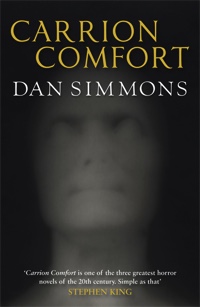 15. Carrion Comfort by Dan Simmons (1989)
15. Carrion Comfort by Dan Simmons (1989)
Possession tales are terrifying for a specific reason. With some of our most famous horror stories—ones that follow knife-wielding masked madmen, houses that consume humans, scorned telekinetic teens—the victim, even in death, retains control of his or her own mind. The same can’t be said for the dead in Dan Simmons’ 1989 classic, Carrion Comfort, a super-thick read that begins in ’40s concentration camps and travels through the decades with three old-age “mind vampires.” No, Carrion Comfort is a different kind of mindfuck—its antagonists don’t simply possess. They use the human mind to feed, prolonging their own lives at the expense of others. The 700-plus page epic is a beast to power through, but it’s a fresh take on two different tried-and-true horror tales.
—Tyler Kane

 14. Broken Monsters by Lauren Beukes (2014)
14. Broken Monsters by Lauren Beukes (2014)
With 2011’s The Shining Girls and 2014’s Broken Monsters, South African novelist Lauren Beukes has established herself as a master of the horror/thriller. It’s tough to pick between the two novels, but Broken Monsters’ Detroit setting, outsider artist serial killer (Hannibal and True Detective fans will feel right at home), and unexplained otherworldly threat just barely edges out The Shining Girls’ impressive time-travel continuity. In both outings, Beukes masterfully rotates perspectives, slowly filling in a complete picture of the atrocities men will commit when given a push by a malevolent force. Where The Shining Girls focused more on one resilient survivor, Broken Monsters spreads its narrative love a little more evenly, finding a handful of struggling heroes eking out a living in America’s most emblematic capitalist failure. Beukes rejects easy “ruin porn,” though, refusing to reduce Detroit to a grimy background for elaborate murders. With its impeccably researched setting and its unflinching look at evils both known and unknown, Broken Monsters is the best work yet from a young horror writer to watch.
—Steve Foxe

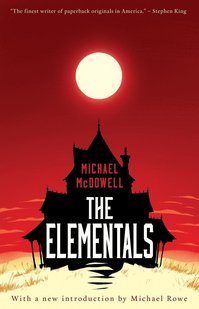 13. The Elementals by Michael McDowell (1981)
13. The Elementals by Michael McDowell (1981)
Michael McDowell’s recently recovered horror classic doesn’t feature explicitly queer characters, but his saga of the McCray and Savage families—and the sandy spirit that haunts their Victorian beach houses—is pure self-aware Southern Gothic through his singular gay voice. It possesses enough camp to nod at fellow friends of Dorothy and enough chills to titillate any scare-junkie. McDowell is best remembered as the screenwriter behind Beetlejuice, and he was celebrated by the likes of Stephen King before his early death from AIDS-related illness in 1999. With its sun-bleached setting, The Elementals is a sweltering read for horror fans and a potent reminder of the generation of talent lost to the AIDS epidemic.
—Steve Foxe

 12. Dracula by Bram Stoker (1897)
12. Dracula by Bram Stoker (1897)
The Dracula tale is possibly the most-embedded horror story in American culture, and if Let the Right One In, True Blood and the Twilight series are any indication, the classic vampire tale is still alive and well in the pop culture realm. Stoker didn’t invent the vampire in fiction—that was John Polidori in 1819, with The Vampyre. But Stoker’s Dracula molded the vampire story into the tales we know today, which blend gore, horror and romance in a neat, red velvet-covered package. Stoker’s Dracula was a critical success, but it’d be decades—and Stoker’s own death—before it’d prowl its way into culture as we recognize it today.
—Tyler Kane

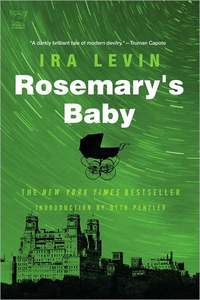 11. Rosemary’s Baby by Ira Levin (1967)
11. Rosemary’s Baby by Ira Levin (1967)
We owe Ira Levin and Rosemary’s Baby a great debt. Arriving in 1967, Rosemary’s Baby is often cited as the first major spark that ignited the horror boom, giving rise to most of the other titles on this list. If you’ve seen Roman Polanski’s film, then you know the story well: a young couple moves into a new apartment building, and there’s more to the kindly old neighbors than one might assume. Rosemary’s going to have a baby, you see, and everyone is very excited for the new arrival. Polanski’s adaptation doesn’t stray far from Levin’s source material, but it’s worth doubling back to the novel that quite possibly started it all.
—Steve Foxe

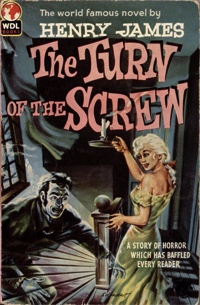 10. The Turn of the Screw by Henry James (1898)
10. The Turn of the Screw by Henry James (1898)
Are two immaculate little children possessed by their former caretakers? Or is the kids’ current ward simply going batshit bonkers? Henry James posed this question in his 1898 novella, The Turn of the Screw, and like some literary Mona Lisa smile, any attempts to excavate its truth have just sprung more debate. This story within a story within a story relays a nameless host’s discovery of a manuscript about a poor woman hired to watch two bizarre adolescents. One of the kids, the young Miles, has been expelled from his school for unexplained reasons, save that he’s “an injury to the others.” And then the governess learns that the woman she’s replaced, Miss Jessel, got freaky with a farmhand, Peter Quint, before the pair shuffled off their respective mortal coils. What’s scarier than ghouls that prey on the innocent? Inter-class sexual shenanigans. Produced at the tail end of the Victorian era, a few of these themes are far more transparent then the alleged ghosts that embody them: passionate sex is bad news, especially if a lower-rung manual worker seduces you into his literal and metaphorical barnyard. Indeed, The Turn of the Screw unintentionally advertises its most sensual points of conflict. Everything else here suffocates the reader in creeping, ambiguous tension. Whether rural ghosts corrupted the innocent or not, we’re ultimately left with (117-year-old spoiler alert) a confused woman holding a small child’s lifeless body.
—Sean Edgar

 9. ‘Salem’s Lot by Stephen King (1975)
9. ‘Salem’s Lot by Stephen King (1975)
Carrie was an explosive start, but Stephen King’s second published novel best forecasted what to expect from the horror genre’s most outstanding author. Praised upon release as “Peyton Place meets Dracula,” a reference that only half-makes sense to most modern readers, ‘Salem’s Lot brought the vampire myth into the backyards of semi-rural Americans, and found King at his most ruthless; characters you come to love will meet grisly ends. Amusingly, the novel also features the first of King’s many writer protagonists. King sold ‘Salem’s Lot for an outstanding sum by today’s standards, let alone 1975’s, and never let up from there. This year’s The Outsider even touches upon some of the same themes, to chilling effect.
—Steve Foxe

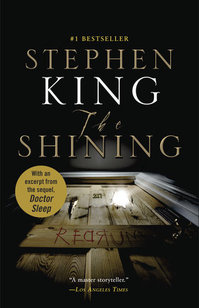 8. The Shining by Stephen King (1977)
8. The Shining by Stephen King (1977)
For most modern readers, legendary director Stanley Kubrick’s stay at the Overlook Hotel looms large over Stephen King’s original novel. Nearly all of the moments lodged in the public consciousness—everything you’ve seen parodied on The Simpsons—are only in the film: the elevator of blood, the ghoulish twin girls, the typewriter, “Here’s Johnny!” Pushing past these iconic bits of pop culture reveals one of King’s greatest accomplishments, a hauntingly compelling look at a troubled man’s descent into madness. King’s novel is more sympathetic toward Jack Torrance, a recovering alcoholic writer (sound familiar?) trying to improve his family’s life by taking a job as caretaker of a remote off-season resort with a barely concealed violent history. The house wants Danny, Jack’s gifted young son, and puts the Torrance family through hell to get to him. King infamously hates Kubrick’s adaptation, and while it’s hard to debate the film’s quality or place in the horror movie pantheon, the novel is the more nuanced and, arguably, scarier version of the story, topiary monsters and all.
—Steve Foxe

 7. NOS4A2 by Joe Hill (2013)
7. NOS4A2 by Joe Hill (2013)
Not one to be outdone by his dear old dad, Heart-Shaped Box and Horns author Joe Hill unleashed full holiday terror for his third novel, along with a warm embrace of the nostalgia-tinged magic so frequently employed by Stephen King. In NOS4A2, both Victoria McQueen and Charlie Manx can slip out of time and space when they ride the right vehicle: Vic can find lost things on her rickety bike, and Manx can journey to “Christmasland” in his vintage Rolls-Royce Wraith. Beyond the cheery name and amusement-park shine, Manx’ Christmasland is the last place good little boys and girls want to end up, and Vic is the only child who escapes a ride on the Wraith. Much like Santa himself, Manx never forgets a child, and when Vic is too old for his tastes, Vic’s son will do. NOS4A2 represented a turning point for Hill, as his own career was established enough that he loosened up about his parentage, resulting in a novel that blends the best of Hill’s distinct style with his father’s influence—and the most quintessentially frightening take on Christmas in modern memory.
—Steve Foxe

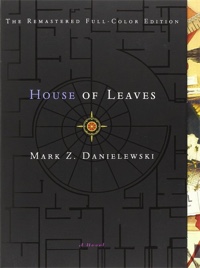 6. House of Leaves by Mark Z. Danielewski (2000)
6. House of Leaves by Mark Z. Danielewski (2000)
The story within a story in House of Leaves would have been unsettling enough: a family moves into a house and slowly discovers that the inside is somehow larger than the outside. But Mark Z. Danielewski’s ambitions are much, much higher. House of Leaves is told in myriad ways, including layers of footnotes, sections with color-blocked words, fake interviews with real celebrities and passages that require you to transcribe the first letter of each sentence to reveal another chapter hidden within. The mounting terror of the Navidson family is all embedded within the story of a young tattoo artist losing his grip on reality. “Lovecraftian” has become shorthand for tentacles and elder gods, but Danielewski’s debut novel nails a different component of the genre grandfather’s legacy: true madness. The labyrinthine structure of this tome (over 700 pages) constantly calls into question the sanity of not just the protagonists, but of the person flipping the pages, too. House of Leaves isn’t a David Foster Wallace-level challenge for readers, but it does require an investment—and entanglement—that some may be too scared to allow, for fear that they might start hearing a growling in the walls, too.
—Steve Foxe

 5. Frankenstein or The Modern Prometheus by Mary Shelley (1818)
5. Frankenstein or The Modern Prometheus by Mary Shelley (1818)
Frankenstein isn’t just an iconic horror novel; it’s a complete shift in perspective of what horror is and can be. Hanging with her pals in Switzerland’s Villa Diodati, a teenaged Mary Shelley conceived a fatally ambitious scientist committed to creating new life. Victor Frankenstein accomplishes his goal, synthesizing a lumbering, grotesque humanoid. This book brings the word monster under the strictest of scrutinies: the protagonist abandons his unconventional child, leaving it to stumble blindly through the world searching for its surrogate “father.” Who’s the real villain? The walking, talking science miracle feels, loves and suffers the abhorrent reactions of an uncaring humanity. We the reader have a new thing to fear: ourselves. We are the horror. We create our own monsters. And, like the Prometheus referenced in the secondary title, we burn in the flames we ignite. Frankenstein’s legacy can be felt centuries later. Just watch a neglected, misshapen child pushed to the bottom of a lake evolve into a vengeful teenager dismemberment machine, and Friday the 13th takes on a whole new flavor after reading this terrifying trailblazer.
—Sean Edgar

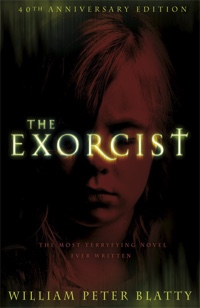 4. The Exorcist by William Peter Blatty (1971)
4. The Exorcist by William Peter Blatty (1971)
William Peter Blatty is better known today for the Academy Award-winning screenplay he adapted from his own novel than for the original text itself. Unlike The Shining, the film never diverges too widely from the source material, but that shouldn’t keep horror fans from picking up the novel. Blatty’s text has the time and space to better establish all of its key players, specifically Father Damien Karras, layering on the dread long before the pea soup starts flying. In a film full of movie magic, it’s still possible to close your eyes or look away. In the novel, Blatty asks the reader to imagine truly horrific things, and the depths of human imagination will always be a scarier place than a film editing room.
—Steve Foxe

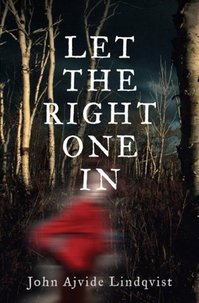 3. Let the Right One In by John Ajvide Lindqvist (2004)
3. Let the Right One In by John Ajvide Lindqvist (2004)
If fiction’s taught us anything in recent years, it’s that the vampire genre can be a tired—and ironically toothless—one. But Swedish writer John Ajvide Lindqvist breathed new life into the eternally overdone tale with his debut novel, Let the Right One In, which tells the story of a bullied grade-school student named Oskar and his new friend and neighbor, Eli. Eli is brilliant, deathly pale—not to mention dirty and smelly. She only comes out at night, but more than anything, she’s a pillar of support to lonely Oskar. Maybe there’s blood, gore, KISS songs and acidic solutions that give this story its horrific edge, but at its, core Lindqvist penned a stirring tale of love and acceptance at the confusing phase that is (sometimes eternal) puberty.
—Tyler Kane

Of all the King books revolving around plucky kids, these might be the pluckiest, most iconic and possibly the most annoying. The protagonists are a collection of fairly broad stereotypes (geek, fat kid, sickly kid, “the girl,” etc.), painted in an all-encompassing pastiche of ‘50s American life, but in the end that’s really the point. King remains and has always been obsessed with the turbulent years of early adolescence. The titular “IT,” on the other hand, is probably King’s most enduring and iconic monster, an interdimensional being of pure malevolence and alien mindset that seems so much simpler on the surface. An evil clown that kills kids? That could at least be dealt with in ways accessible to adults. Fighting the actual evil of It is a much trickier proposition, one that depends upon a perfect blend of mysticism and childhood faith necessary to overcome It’s greatest weapons: fear and entropy, and the ability to make an entire town forget about the atrocities it commits and allows. The ending of It is occasionally cited as its weak point, but it’s a big, fat novel that is far more about a journey, both in the ‘50s and ‘80s, and the horrifying visions suffered along the way.
—Jim Vorel

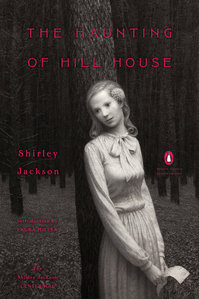 1. The Haunting of Hill House by Shirley Jackson (1959)
1. The Haunting of Hill House by Shirley Jackson (1959)
“No live organism can continue for long to exist sanely under conditions of absolute reality; even larks and katydids are supposed, by some, to dream. Hill House, not sane, stood by itself against the hills, holding darkness within; it had stood so for eighty years and might stand for eighty more.” These are the legendary opening words of The Haunting of Hill House, our pick for the best—and best-written—horror novel of all time. Shirley Jackson’s chilling, lean haunted house tale follows Eleanor Vance, a young woman with a bit of a sensitivity for the paranormal. Along with Dr. John Montague, a paranormal investigator, a young artist named Theodora and Hill House heir Luke Sanderson, Eleanor examines the cold, labyrinthine old mansion. The rooms seem to shift, the architecture makes no sense, and even without the ghosts—and oh, there are quite likely ghosts—it’s an unsettling visit. But the heart of the mansion isn’t necessarily the terror drummed up within its walls. What’s most troubling is its ultimate effect on the young Eleanor, whose steadily declining mental state hits a dead end behind the gates of Hill House in one of the most perfect conclusions in all of horror fiction.
—Tyler Kane & Steve Foxe








































